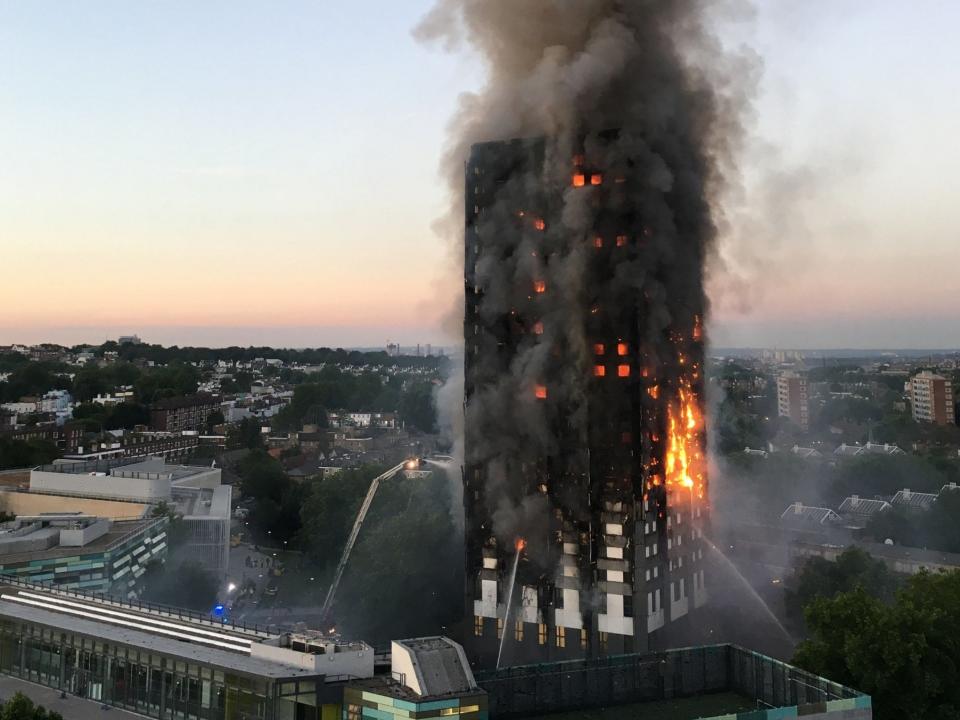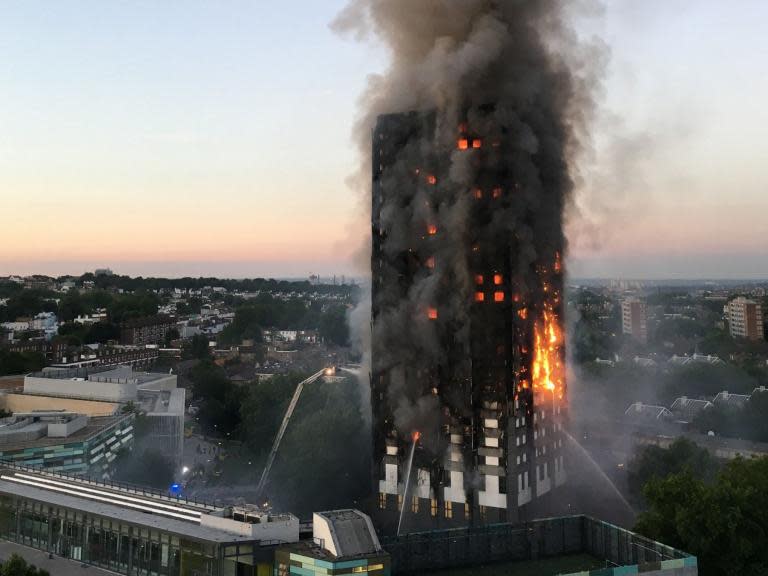Grenfell Tower firefighter begged fire chiefs to abandon 'stay put' advice at burning building, inquest hears
A fire officer begged his superiors to abandon “stay put” advice being given to Grenfell Tower residents, the official inquiry into the tragedy has heard.
London Fire Brigade was first alerted to the blaze in west London at 12.54am – on 14 June last year – and, in line with the fire policy for high-rise buildings, told residents to remain in their flats.
But the speed and ferocity of the fire meant many occupants became trapped on upper floors. The stay-put policy was finally ditched at 2.47am – a heavily criticised delay.
On Wednesday it emerged watch manager Norman Harrison had tried to get senior colleagues to abandon the policy much earlier.
Mr Harrison – who said the intensity of the fire reminded him of “the surface of the sun” – realised the stay-put strategy was wrong by 1.50am.
“I was truly shocked at such a severe fire over so many floors,” said Mr Harrison.
“Immediately I knew that stay-put policy should no longer apply in this building... I could see that just didn’t apply here any more.”
Mr Harrison said he knew from previous experience each flat would be designed to withstand flames for 60 minutes – but he estimated it would take six hours to reach the top floor.
He said he knew telephone operators would be telling residents to stay put in their flats until the fire brigade could rescue them.
“In reality I didn’t think that there would be an opportunity to rescue people on the upper floors and I strongly felt that the advice needed to be changed from the stay-put policy to almost a simultaneous decision to evacuate.”
The watch manager then rushed over to the incident command vehicle, where he encountered a group of senior managers. He made his views known to them in a “very direct and unequivocal” manner.
“I announced to all of them that I believed the advice our operators were giving out to the people trapped in the building needed to be changed,” he said.
“I suggested that someone tell our control operators to change that advice as soon as possible. I recall that some discussion took place.
“It was mentioned that there was only one escape route – there would have been lots of firefighting hose within the very narrow stairwell. I then asked if it was possible to use our emergency air supply equipment... I never got answered.”
Mr Harrison acknowledged the evacuation of Grenfell Tower would have been “extremely difficult task” with only a single staircase available as an escape route.
Asked by counsel to the inquiry Andrew Kinnier QC why this was, he replied: “Because the staircase is full of smoke.
“The residents, as they try to evacuate from their flats, would be exposed to an irrespirable atmosphere as they tried to come down the stairs.”
Mr Harrison was sent back to his command-unit vehicle, where he spent the night passing information from 999 calls with trapped residents to rescue teams in the tower.
He told the inquiry there was only a brief timeframe when an evacuation was safe, when the fire remained only on the external cladding.
“I think we had a small window of opportunity to bring people down to safety, or basically as safe as it was going to be for the duration of the incident,” he said.
His statement concluded: “It was an impossible task from the off. I think it was a lose-lose situation no matter what decisions were made. People were going to die that morning. It was just a matter of how many.”
Mr Harrison choked back tears on Wednesday when he offered his condolences to families bereaved by the fire. “I hope you get the justice you deserve,” he said.
Earlier on Wednesday the inquiry heard how a firefighter carried a woman halfway down the tower after she collapsed in the smoke-clogged stairwell.
Adam Johnson, a firefighter based in Soho, had been sent to carry out a rescue on the 19th floor of the burning block when he encountered two residents and their dog.
They were Nicholas Burton and his wife Maria del Pilar Burton. She became the disaster’s 72nd victim when she died in January.
Additional reporting by Press Association

 Yahoo News
Yahoo News 

